
On 3 Jul 1782, Pierre Berthier was born, the French mineralogist and mining engineer who discovered a new mineral (23 Mar 1821) near the village Les Baux de Provence in southern France, from which it was named bauxite. Although the discovery went almost unnoticed then, it has since become an important ore for the extraction of aluminium, now one of the most useful of metals. Although aluminium is the most abundant metal on the Earth’s surface, it remained unknown for many centuries, because it is especially difficult to extract.
When J.A. Price gave an address on 18 Jan 1886, reviewing the History and Uses of Aluminium, he did not know that a month later, Charles M. Hall would succeed in inventing a novel electrolytic process by which aluminium was to become an inexpensive everyday material, as we know it today. World bauxite production is now 100 million tonnes.
Scientific American printed the text of Professor Price’s address. It makes an interesting read, because the process to extract aluminium as then known, was about to change dramatically.

On 3 Jul 1961, the explosion of a SL-1 military test reactor in Idaho was the world’s first fatal nuclear accident. SL-1 was an experimental reactor built in the late fifties at the Idaho National Reactor Testing Station. It was a prototype for small, portable reactors the Army hoped could power radar stations along the Distant Early Warning (DEW) radar line along the northern edge of the continent during the Cold War. Today's book pick is: Proving the Principle: A History of the Idaho National Engineering and Environmental Laboratory, 1949-1999, by Susan M. Stacy, which includes a brief account of the accident, without speculation. The larger story covered by the book is how research at the Idaho Lab directly resulted in, among many other things, nuclear reactors producing electricity and nuclear propulsion of subs and carriers. There was even a nuclear powered aircraft project which fortunately never flew.
It is available from Amazon, typically about New from $73.00. Used from $7.50. (As of earlier time of writing - subject to change.)
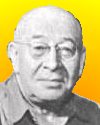 | There are two ways to slide easily through life; to believe everything or to doubt everything. Both ways save us from thinking. |
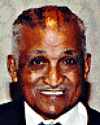 | On my tests I used to always give as my first question, define chemistry, because I thought every student should know what they were taking. I do this quite often. |
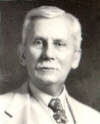 | No paleogeographic map is worth the paper on which it is printed unless it depicts the actual state of affairs for a limited geologic time, say several hundred thousand years. |
| Before you look at today's web page, see if you can answer some of these questions about the events that happened on this day. Some of the names are very familiar. Others will likely stump you. Tickle your curiosity with these questions, then check your answers on today's web page. | |
| Births | |
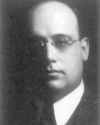 | Jesse Douglas, born 3 Jul 1897, was an American mathematician who was awarded one of the first two Fields Medals in 1936 for solving the Plateau problem. which had first been posed by the Italian-French mathematician Joseph-Louis Lagrange in 1760. What is the Plateau problem about? |
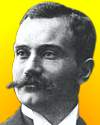 | On 3 Jul 1874, Johan Gunnar Andersson was born, the Swedish geologist and archaeologist whose studied sites prehistoric China. He was an adviser to the Geological survey of China, during excavations at Chou-k'ou-tien outside Peking. In 1921, at a cave near there, on the basis of bits of quartz that he found in a limestone region, he predicted that a fossil man would be discovered. Six years later, the first evidence of the fossil hominid Sinanthropu was indeed found there. By what name is the Sinanthropu hominid commonly known? |
| Deaths | |
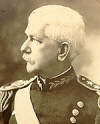 | A U.S. Army surgeon (1854-1920) contributed greatly to the building of the Panama Canal by introducing mosquito control to prevent yellow fever and malaria. In Cuba, he assisted in eliminating mosquito breeding grounds, then in 1904, he led the ten-year anti-mosquito campaign to wipe out yellow fever in Panama. Can you name this surgeon? |
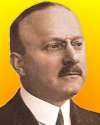 | A French engineer and industrialist (1878-1935) introduced Henry Ford’s methods of mass production to Europe. His initial work in the automobile industry with the Mors automobile firm was interrupted by World War I, during which he built a plant for mass production of munitions. After the war, he converted the factory for assembly of a small, inexpensive vehicle sold in France. The first car known by his name was introduced in 1919. The manufacturer is now present in fifty-seven countries. Can you name this car brand? |
| Events | |
 | On 3 Jul 1903, the first cable across the Pacific Ocean between Hawaii, Guam and Manila was completed and spliced at Manila, Philippine Islands. After testing, the first official message was sent the next day. This technological event ended Hawaii’s isolation by connecting it to the mainland U.S. and the rest of the world. The cable was a mainstay of communications into the early 1950s when newer technology rendered it obsolete. The cable route included establishing a cable station on an unpopulated island which became well-known in WW II. Can you name it? |
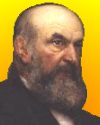 | On 3 Jul 1841, an English astronomer entered in his journal “Formed a design in the beginning of this week in investigating, as soon as possible after taking my degree, the irregularities in the motion of Uranus… in order to find out whether they may be attributed to the action of an undiscovered planet beyond it…” By Sep 1845 he sent location information on the new planet to Cambridge Observatory, but it was not acted upon. Instead, Urbain LeVerrier discovered Neptune on 23 Sep 1846, at Berlin. Can you name the English astronomer? |
Fast answers for the previous newsletter for July 2: production of energy in stars • crystal structure • eight • butterfat content of milk • it was cast to form floating pontoons • 120 m (416 ft).
 If you enjoy this newsletter, the website, or wish to offer encouragement or ideas, please send feedback by using your mail reader Reply button.
If you enjoy this newsletter, the website, or wish to offer encouragement or ideas, please send feedback by using your mail reader Reply button. Your click on a Facebook, StumbleUpon, or other social button on the site webpages is also a welcome sign of appreciation. Thank you for using them.
© This newsletter is copyright 2020 by todayinsci.com. Please respect the Webmaster's wishes and do not put copies online of the Newsletter — or any Today in Science History webpage. (If you already have done so, please remove them. Thank you.) Offline use in education is encouraged such as a printout on a bulletin board, or projected for classroom viewing. Online, descriptive links to our pages are welcomed, as these will provide a reader with the most recent revisions, additions and/or corrections of a webpage. For any other copyright questions, please contact the Webmaster by using your mail reader Reply button.
--
If you do not want to receive any more newsletters, Unsubscribe
To update your preferences and to unsubscribe visit this link
Executive Real Estate Business Class
-
"It was like a man with wings. It wasn't like anything you'd see on TV or in a monster movie." ...
About the publisher
Search This Blog
Blog Archive
-
▼
2020
(1542)
-
▼
July
(200)
- PHOTOGRAPHY: The danger of documenting sharks
- Meet The Serial Killer Who Ate His Victims Because...
- The Roundup Top Ten from History News Network
- On This Day for July 31 - Lunar Roving Vehicle fir...
- Newsletter for Friday 31 July.
- Lockdowns killing more children than COVID + Docto...
- YOUR WEEKLY ESCAPE: Revisiting an iconic Nat Geo c...
- July 31: The Pilgrim Fathers Depart and the Battle...
- ANIMALS: The dog that got COVID-19
- On This Day for July 30 - Death of Otto von Bismar...
- Newsletter for Thursday 30 July.
- Frontline Docs 2nd Video Press Conf at SCOTUS We h...
- BREAKING NEWS: First U.S. dog to test positive for...
- July 30: First Defenestration of Prague, the 1st O...
- Demystified: Why Do Wolves Howl?
- The Champs Are Back on Forged in Fire Tonight
- SCIENCE: A rush to Mars during a rough patch at home
- Breaking News from History News Network
- On This Day for July 29 - National Aeronautics and...
- Newsletter for Wednesday 29 July.
- All Social Media Censor Frontline Docs COVID Video...
- July 29: Spanish Armada Scattered and Taft's Secre...
- TRAVEL: How to stay safe if you need to travel
- On This Day for July 28 - Beginning of World War I...
- Newsletter for Tuesday 28 July.
- Video Presentation from Washington Summit: America...
- July 28: Robespierre Guillotined, Austria-Hungary ...
- HISTORY: How the vice presidency became critical
- Enjoy Summer with Nat Geo Kids Magazine
- New This Week on History News Network
- On This Day for July 27 - Terrorist attack at Atla...
- Newsletter for Monday 27 July.
- COVID Propaganda & Tyrannical Edicts Affecting Men...
- July 27: Walter Raleigh Brings Tobacco, the Atlant...
- FAMILY: Can you transfer your ‘retro fun’ to your...
- The 10 greatest discoveries made by the British pu...
- On This Day for July 26 - Suez Canal seized, John ...
- Newsletter for Sunday 26 July.
- CDC says actual # of cases is up to 13X higher tha...
- July 26: 1st Muslim Civil War, Pizarro's Royal Cha...
- The Compass: Greece
- On This Day for July 25 - American advance into Ca...
- Newsletter for Saturday 25 July.
- VIRUS UPDATE: What does COVID-19 do to a child's b...
- July 25: The 1st Steam Locomotive, Mussolini Dismi...
- PHOTOGRAPHY: The photo that shocked a nation
- This Hardened Blob Of Nuclear Waste Could Kill You...
- On This Day for July 24 - Beginning of Mata Hari's...
- The Roundup Top Ten From History News Network
- Newsletter for Friday 24 July.
- Medical Journal: make the vaccine Mandatory! + Fre...
- YOUR WEEKLY ESCAPE: The man who claims to be Jesus...
- July 24: Cartier Lands in Canada, Mary Queen of Sc...
- ANIMALS: Let’s not forget this other catastrophe
- Demystified: Are Dogs Really Color-Blind?
- On This Day for July 23 - Egyptian monarchy topple...
- Newsletter for Thursday 23 July.
- listen to Dixie Brogdon Hopson tells how the hospi...
- July 23: Upper and Lower Canada United and the Bre...
- SCIENCE: The joy of vintage comforts
- A Puzzling Challenge on Forged in Fire Tonight
- Explore King Tut's tomb with National Geographic H...
- Breaking News from History News Network
- On This Day for July 22 - Deng Xiaoping reinstated...
- CDC Knows Masks and other methods don't work to st...
- Newsletter for Wednesday 22 July.
- July 22: First Congress of Vienna and Spoonerism
- TRAVEL: When tourism returns will it be better?
- Enjoy Summer with Nat Geo Kids Magazine
- On This Day for July 21 - Egyptians defeated in th...
- Newsletter for Tuesday 21 July.
- July 21: 1st Battle of Bull Run, the Trans-Siberia...
- HISTORY: John Lewis always stood for the same thing
- New This Week on History News Network
- On This Day for July 20 - First Moon landing, Sir ...
- Newsletter for Monday 20 July.
- What Scientific Study Shows 6 feet distance or "ma...
- July 20: On This Day in History
- FAMILY: Searching for patience
- Anne of Cleves: Henry VIII's most successful queen?
- On This Day for July 19 - U.S. women's suffrage mo...
- Newsletter for Sunday 19 July.
- Mask Truth Part 2, Data by Nations shows Hydroxych...
- July 19: 1st US Women's Rights Convention and V fo...
- The Compass: Colombia
- On This Day for July 18 - Publication of Mein Kamp...
- Newsletter for Saturday 18 July.
- Enough! Mask Truth, re-Creating you! the intended...
- CORONAVIRUS SPECIAL EDITION: What type of person d...
- July 18: Spanish Civil War Begins and 7 Years of K...
- PHOTOGRAPHY: Showing a nation losing its drinking ...
- How Julia Child Went From World War 2 Spy To Belov...
- Introducing Expedition: Learn! A New Way to Help K...
- The Roundup Top Ten for July 17, 2020
- On This Day for July 17 - Beginning of the Spanish...
- Newsletter for Friday 17 July.
- July 17: Execution of the Romanovs and a Stormy Bi...
- YOUR WEEKLY ESCAPE: An intimate look inside a mode...
- ANIMALS: The trouble with 'retired' chimps
- Man vs. 800-Pound Beast! Watch New Episode of Alon...
-
▼
July
(200)
-
Blogroll
-
About
HistoryFact










0 comments:
Post a Comment